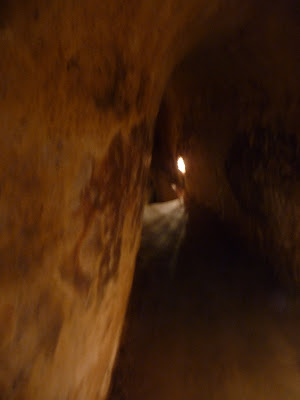Vietnam: Thoughts on the War.
I could not be in Vietnam without think about the War as I was visiting places which had been in the headlines all those years ago: Hanoi, Saigon, Da Nang, the Mekong Delta.
I saw a sign to Dien Bien Phu - the place of the defeat of the French in 1954. All though I was only ten years old then I remember reading in the newspaper about that siege and battle.
(In 2011 I read “Dien Bien Phu the epic battle America forgot” by Howard R Simpson).
I thought of the Vietnam vets I have known, and remembered Francis Bond, a young man from Fitchburg who was killed in the early days. I never met Francis, but I became very fond of his parents Bob and Bernice, and heard their grief.
I have prayed at “The Wall” in Washington D.C. whilst looking at Francis’ name.
Most of my Vietnamese contacts are very young. All they know about the war is from what they learned in school. The older folks are slipping away – retiring to their ancestral villages, and passing from this life.
My tour organiser Ruby wanted so much for me to meet his parents, but there was not time. His Dad fought in the North Vietnamese Army, and is now saddened that his veteran’s pension is just $10 per month.
I was at Cu Chi where tourists can see some of the tunnels built by hand by the Viet-Cong. In all there are 250 kilometers of tunneling. Here the men and woman of the Viet-Cong lived for a month at a time.
Many died, most from malaria and other diseases; others by American action at the hands of G.I.’s who were called “tunnel rats” and were trained to fight underground.
Underground there were clinics, uniform factories, and places where they made munitions with the scrap metal from American bombs.
My blood chilled when I saw a war-time documentary in which Vietnamese fighters (men and women) were given the highest military awards “For Killing Americans”.
I cringed when I saw examples of the booby traps which were set for unwitting young American soldiers – who, out on patrol, would fall into a hidden trap and there be impaled by vicious metal spikes.
Back in HCMC I went to the Museum of War Remnants. Outside there were some American planes and tanks. Inside there were various displays – including a harrowing one on the effects of the use of Agent Orange.
The Museum’s “propaganda” was minimal.
I was startled to see a “Life Magazine” photo’ from war time. It showed an Army Medic who, under sniper fire, was trying to save the life of a young G.I.
The medics name was Robert Callahan, and he hailed from Pittsfield, MA where I lived and worked for 16 years.
I think that the war was a disaster for all concerned.
 |
| Widened entrance to tunnels for touriists. (originally 2 feet high, 2 feet wide) |
 |
| Entrance to tunnel. I took three or four paces, then retreated due to claustrophobia, |
 |
| A young Vietnamese docent demonstrates a secret entrance to the tunnels. I wish that he had not been grinning. |
 |
| Speaks for itself |
 |
| Looking down into a tunnel entrance. |
 |
| A vicious trap for an unwary G.I. Made me cringe. |
 |
| Museum of War Remnants HCMC 1 |
 |
| Museum of War Remnants HCMC 2 |
 |
| Robert Callahan of Pittsfield MA. "Life" magazine photo at Museum of War Remnants, HCMC |
 |
| Medic Robert Callahan of Pittsfield MA - aged 20 in 1967. Photo from the web. |


Comments
Post a Comment